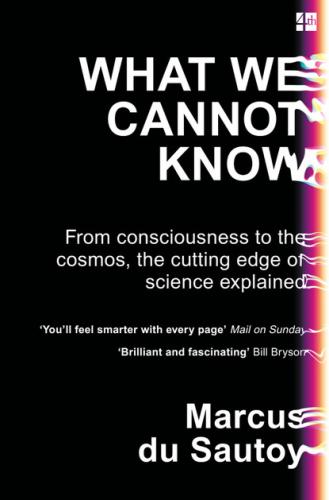Alpha particles being deflected by the nuclei of atoms of gold.
Geiger found that, on the contrary, some of the alpha particles were deflected wildly, to the extent that some bounced back off the gold foil in the direction they’d been fired from. Rutherford was staggered: ‘It was as if you fired a 15-inch shell at a piece of tissue paper and it came back and hit you.’
Again it was mathematical calculations that gave rise to a new model. By counting how many alpha particles were deflected, and by how much, they discovered that the data was consistent with the charge and mass being concentrated in a tiny centre of the atom, which became known as the nucleus. It still wasn’t clear whether this nucleus was indivisible or not.
When Rutherford bombarded lighter atoms with alpha particles evidence emerged that the nucleus wasn’t a single entity but made up of constituent particles. Tracing the paths of the alpha particles in a cloud chamber, he detected paths that were four times longer than they should be. It was as if another particle four times as light was being kicked out of the nucleus by the impact of the alpha particles. Different gases produced the same result. Indeed, Rutherford found that pure nitrogen was being converted into oxygen by the impact. Knock out one of these particles and the element changed.
Here was evidence for a building block from which all nuclei of atoms were built. It behaved just like the hydrogen atom with its electron stripped off. Rutherford had discovered the proton. The nuclei of atoms were built by taking multiples of this proton. The only trouble was that the charge on the atom didn’t make sense. Helium had a nucleus that was four times as heavy as the hydrogen atom, yet the charge was only twice as big. Perhaps there were electrons in the nuclei attached to protons, cancelling out the charge. But the physics being developed to explain the behaviour of these particles precluded electrons and protons in such close proximity, so that couldn’t be the answer.
This led Rutherford in the 1920s to guess that there might be a third constituent, which he called a neutron, with the same ball-park mass as the proton but no charge. Producing evidence for this particle proved very tricky. He used to discuss with his colleague James Chadwick crazy ways by which they might reveal the neutron. Experiments conducted in the 1930s in Germany and France eventually picked up particles being emitted when various nuclei were bombarded with alpha particles, and, unlike the proton, these particles did not seem to possess any charge. But the experimenters mistakenly believed it was some sort of electromagnetic radiation, like the high-frequency gamma rays that had been discovered by French physicist Paul Villard at the beginning of the century.
Chadwick, though, was convinced that these particles must be the neutrons he’d discussed with Rutherford. Further experiments revealed that they had mass just slightly bigger than the proton, and without charge this new particle was the missing ingredient that made sense of the numbers. With Chadwick’s discovery it seemed as if the building blocks of matter had been revealed.
It was a very attractive model. Fire, earth, air and water, the four elements of Aristotle, had been reduced to three particles: the electron, proton and neutron. With these three building blocks scientists believed they could build all matter. Oxygen: 8 protons, 8 neutrons and 8 electrons. Sodium: 11 protons, 12 neutrons and 11 electrons. It was as if the music of the spheres was singing out and the foundations of matter were these notes: protons, electrons and neutrons. All matter seemed to be made up of whole-number combinations of these three particles. Why would you expect these particles to be made up of smaller entities? If they were, you might expect to see fractional pieces between the elements in the periodic table.
Except the dividing didn’t stop there. It turned out that there were experimentally and mathematically very robust reasons to think that protons and neutrons were not indivisible. But the building blocks of the proton and neutron have a strange property: they don’t like to be seen in isolation. They only come in groups, making up something like a proton or a neutron. Safety in numbers. So if they have never been seen on their own, why do scientists think there are even smaller bits into which we can divide protons and neutrons?
Конец ознакомительного фрагмента.
Текст предоставлен ООО «ЛитРес».
Прочитайте эту книгу целиком, купив полную легальную версию на ЛитРес.
Безопасно оплатить книгу можно банковской картой Visa, MasterCard, Maestro, со счета мобильного телефона, с платежного терминала, в салоне МТС или Связной, через PayPal, WebMoney, Яндекс.Деньги, QIWI Кошелек, бонусными картами или другим удобным Вам способом.
